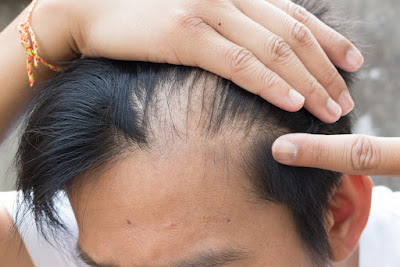There
are two treatments for hair regrowth: PRP and hair transplant. Both of these
treatments are effective at different stages of hair loss and cannot be used
for every hair problem. The difference between the two should be understood in
detail to fully understand how to manage hair loss and how to ensure hair
growth.
Many
people confuse that PRP treatment and hair transplant can be used by anyone
regardless of the hair problem that they are suffering from. However, that is
simply not the case. The two hair restoration treatments are separate and
should be treated as such. People have different hair loss problems. While the
problems for some people include gradual loss of hair, others start developing
bald patches in certain areas of their scalp. The methods used to solve the
problems posed by each are different. Understanding the procedure of PRP and
hair transplant is going to help you fully know what you need at which stage of
hair loss.
How
PRP And Hair Transplant Are Similar
● Both the hair transplant and PRP have a recovery
period that is short. Although you do need to take care for a few days
following the treatments, you don’t need to take a lot of time off from work.
● PRP and hair transplant
method will take over a few months to show visible results. You might
experience hair loss after you get the treatments but that is normal. The hair
growth will eventually begin.
● You cannot start with normal activities right
away when you get either the hair transplant procedure is done or the PRP. The
reason is the increase in blood flow and blood pressure.
● The treatments may need more than one session to
be completed. The number of sessions will depend on the individual case.
How
PRP And Hair Transplants Differ
● PRP is used for treating hair loss and hair
thinning. If you have started to experience thinning of hair where you see your
hair all over the place, then PRP is going to be recommended. However, hair
transplant is recommended usually when you are having bald patches due to hair
loss caused by genetics or other reasons.
● The hair regrowth by hair
transplant might take longer than the PRP procedure. The reason is that
with a hair transplant, the hair follicles from another area are placed in
other regions. They take time to grow. With PRP, the hair root is the target
and so it helps strengthen the hair that is already there. This can take lesser
time to show results.
● The procedures for both of them are different.
PRP uses the technique of drawing blood from you which is then injected in your
scalp for hair growth and hair strengthening. The procedure of hair transplant
uses FUE or FUT transplantation methods to take hair from the donor area and
place the follicles in the bald areas on your scalp.
● The time it takes for the procedure to complete
differs. Each session of PRP treatment can take one to two hours to complete.
While for hair transplant, it can take several hours depending on the size of
the balding area. Hair transplant is more time consuming compared to PRP and
can take a long time to complete.
Kaya’s
PRP And Hair Transplant Procedures
Sometimes
the hair transplant and PRP treatment can be combined together. When new hair
is being transplanted, the PRP might help for the hair to grow faster and
thicker than usual. However, this is not always possible and only after
thorough examination from a surgeon, you can find out if that is possible. Kaya Clinic provides you with both the PRP treatment and the hair transplantation
treatment.
Want
detailed information about both the PRP and hair transplant procedures? You can
visit Kaya and get all your questions answered by experts. You can easily find
out about Kaya hair transplant cost, the
expectations from each procedure, and how Kaya approaches hair loss. This will
enable you to make a decision to tackle hair loss the right way. Kaya can help
you get back your hair and ensure that the hair that grows will be stronger
from the beginning.

No comments:
Post a Comment